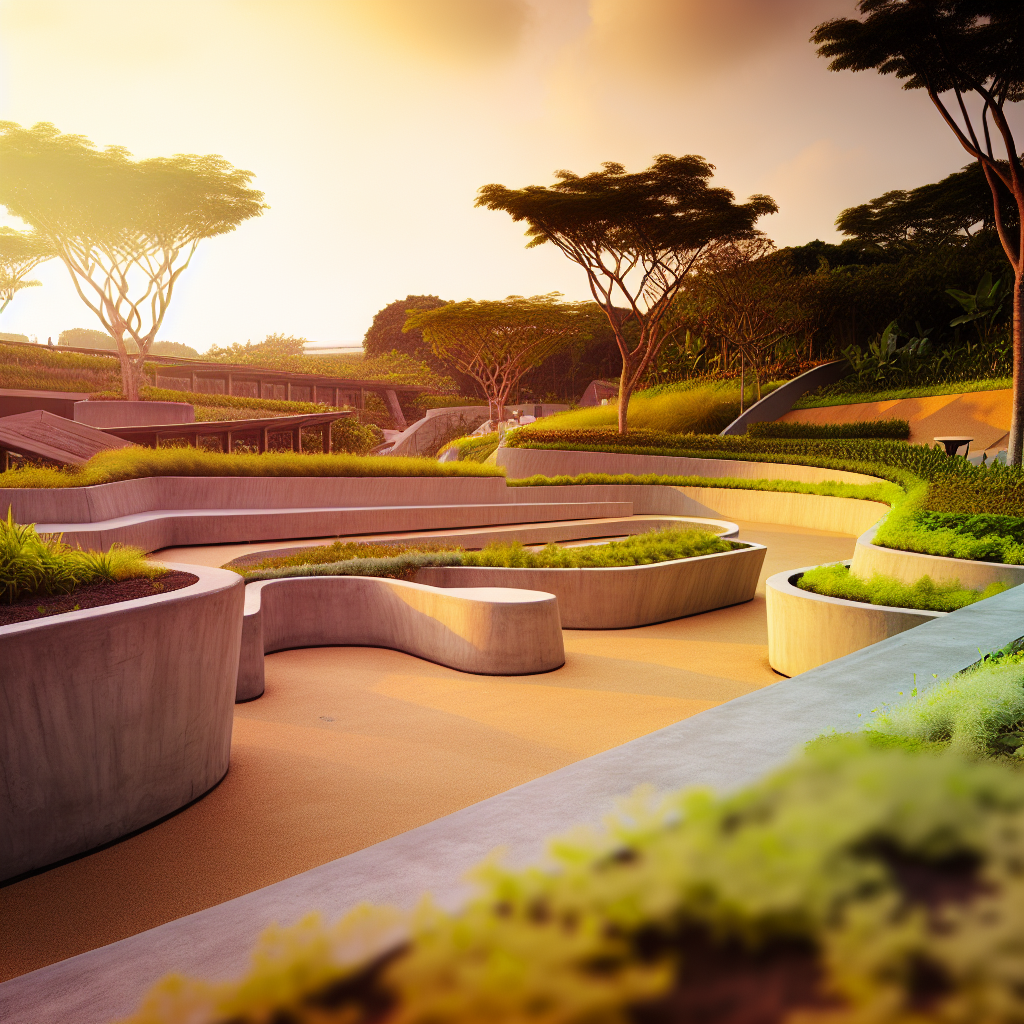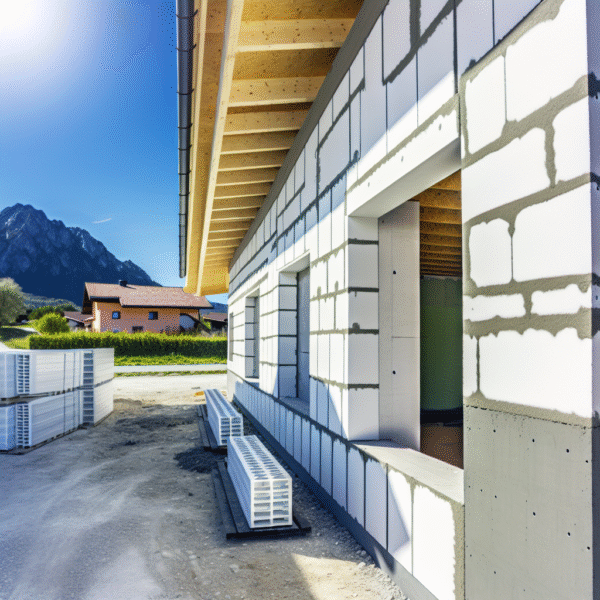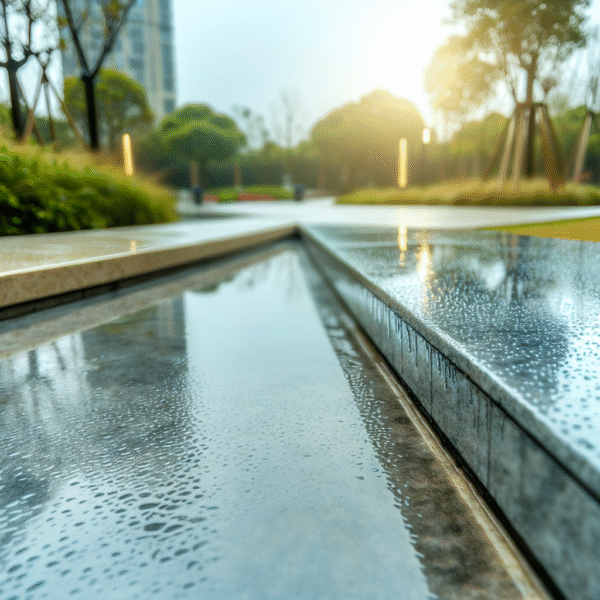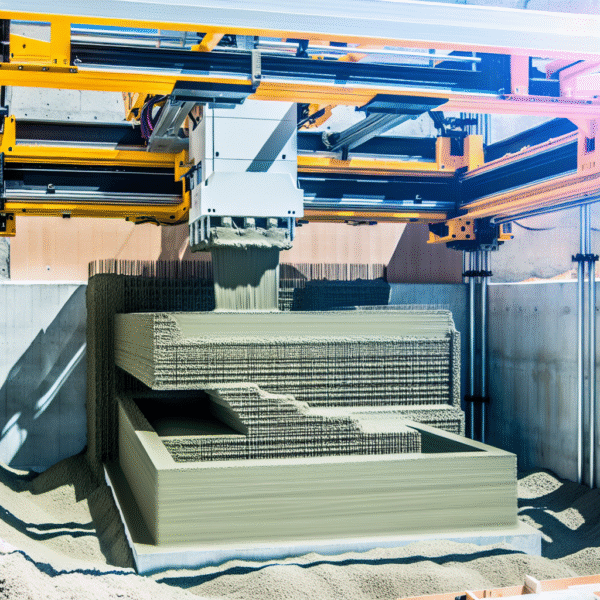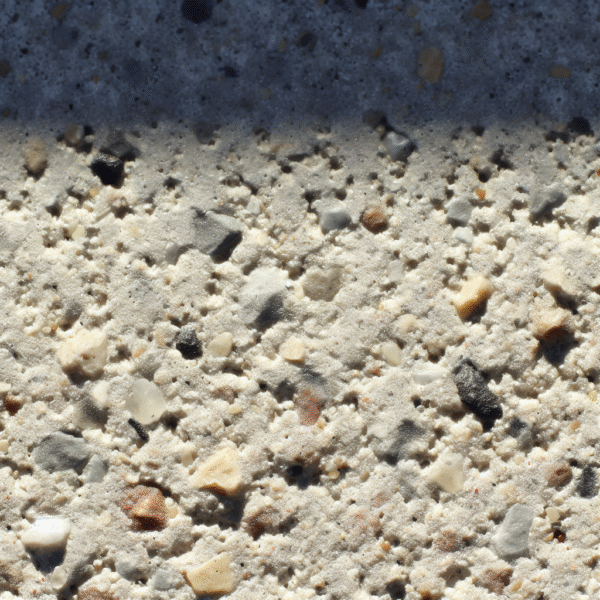Concrete in Landscaping: Exploring Its Beauty and Functionality
Concrete in landscaping is reshaping the way we experience outdoor spaces. Far from its industrial past, this versatile material has become a bold, creative, and low-maintenance solution for families, solo travelers, and outdoor enthusiasts alike. From public parks to private gardens, concrete adds artistic flair while enhancing functionality in ways that often go unnoticed.
Urban planners and backyard designers across North America and globally are embracing concrete in landscaping through inventive applications—sculptural seating, elegant water features, and durable pathways. Its flexibility, longevity, and eco-friendly potential make it the ideal material for those who want outdoor beauty without the upkeep.
Functional Art: Concrete Pathways and Walkable Design
One of the most visually striking and practical uses of concrete in landscaping is pathway design. Today’s walkways aren’t just for getting from A to B—they’re curated experiences using stamped patterns, stained colors, and flowing designs. These enhancements turn ordinary sidewalks into inviting journeys.
At the Portland Japanese Garden in Oregon, concrete pathways are designed with traditional aesthetics in mind. Scoring patterns mimic tatami mats, seamlessly blending with mossy stones and timber details. Families and travelers find these tranquil paths ideal for reflective walks or springtime photography.
For a more urban vibe, visit the Chicago Riverwalk, where colored concrete guides pedestrians along scenic riverbanks. Not only do these paths enhance safety, but they also add visual rhythm that appeals to children and adults alike. You’ll find walkways connecting performance spaces, cafes, and kayak stations—perfect for families seeking active exploration in the city.
Concrete Seating That Doubles as Public Art
Concrete in landscaping isn’t just underfoot—it rises ingeniously into furniture and public art. Across cities, sculptural concrete benches and amphitheater steps offer resting places that double as design statements. These installations invite interaction, spark curiosity, and bring communities together.
In Santa Fe’s Railyard Park, serpentine concrete seating winds through native plantings. It forms organic gathering spaces perfect for farmers markets, art events, or a relaxing sunset. Children climb the curves, while travelers enjoy peaceful pockets for reading or sketching.
Seattle’s Fremont neighborhood offers another delightful surprise. Along the Burke-Gilman Trail, concrete sofas provide colorful, comfortable stops. These quirky pieces blend street art and functional design, creating memorable moments for cyclists, walkers, and photographers alike.
Garden Walls and Raised Beds: Style Meets Structure
Concrete in landscaping is gaining popularity among families and eco-conscious gardeners for its practical use in raised beds and retaining walls. These elements organize space, manage slopes, and endure challenging weather—making them perfect for both modest yards and large public gardens.
At the Los Angeles County Arboretum, concrete terraces showcase Californian native flora. Unlike wooden alternatives, these structures resist rot and provide sleek lines, enhancing plant visibility and drainage. Visitors frequently use them as informal seating while exploring various ecosystems.
Meanwhile, Montreal’s Jardin Botanique features curved concrete planters that delineate paths through its Chinese and Alpine gardens. These planters regulate soil temperature naturally, an approach admired by savvy gardeners and sustainability-minded travelers reading interpretive signs along the route.
Water Features and Interactive Play Spaces
Few materials perform as reliably as concrete in landscaping when it comes to interactive water elements. From splash pads to serene channels, concrete allows designers to create fun, durable, and safe environments that inspire active play and relaxation.
The Rose Kennedy Greenway in Boston is a prime example. Here, sculpted concrete forms playful water spirals where kids dash between fountains, parents lounge nearby, and artists engage visitors during seasonal events. It’s vibrant, family-friendly, and built to last.
Over in Arizona, Tempe Beach Park uses large stepping stones and bankside seating made of concrete, allowing children to splash and explore. With paddleboarding, biking, and hiking nearby, it’s the ultimate rest stop for adventurous solo travelers and families alike.
Color, Texture, and Lighting: Aesthetic Innovation with Concrete
Modern techniques like stamping, staining, and etching have transformed concrete in landscaping into a medium for vivid creativity. No longer dull and gray, it now mimics natural textures and supports storytelling through color, surface, and even integrated lighting.
San Antonio’s Hemisfair Park perfectly illustrates this. Dyed concrete paths incorporate bronze medallions and poetic inscriptions, offering a self-guided cultural experience. Families enjoy discovering history under their feet, while individual travelers often follow the trail of interactive installations powered by QR codes.
In contrast, Toronto’s Sherbourne Common shines—literally. LED lighting embedded into smooth concrete walls and paths creates enchanting night-time experiences. Children chase playful lights, adults capture glowing selfies, and the entire plaza feels alive after dark.
Adventure Areas Built on Concrete Foundations
Concrete in landscaping excels in recreation zones that demand strength and energy. Skateparks, climbing spaces, amphitheaters, and pump tracks all rely on sculpted concrete to withstand high-impact movement, while offering surfaces shaped for creativity and athleticism.
Burnham Skate Park in Chicago, located in Lincoln Park, reflects this philosophy. The lakefront venue features flowing concrete forms that mirror natural wave patterns. It draws skaters, BMX riders, and curious spectators who gather to watch and learn from the action.
On the West Coast, California’s iconic Venice Beach Skatepark hosts some of the world’s best skaters on its beach-adjacent concrete terrain. The golden hour light makes this hotspot a photographer’s dream and a cultural landmark in urban movement.
Smart Tips for Using Concrete in Your Outdoor Space
If you’re inspired to use concrete in landscaping at home, whether you’re a busy parent or a globe-trotting minimalist, there are easy, high-impact ways to get started. Here are key tips from landscape pros:
- Hire local experts: Regional contractors understand how climate affects concrete curing and performance.
- Go modular: Use precast planters or benches for flexibility and quick setup—ideal for renters or DIY enthusiasts.
- Think color: Choose stains that suit your garden’s palette—earth tones for subtlety, bold colors for impact zones.
- Seal for durability: Proper sealing protects against mold, cracks, and weathering, reducing maintenance needs.
- Add personality: Use broom finishes or decorative aggregates for texture, safety, and visual appeal.
Whether on a hike through a peaceful garden or a stroll across an urban plaza, take a closer look—you’re probably walking on or resting against a design feature that owes its charm and strength to concrete in landscaping. It’s time to reimagine this humble material as the foundation of beautiful, functional outdoor living.
